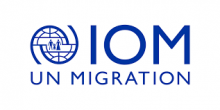Asia’s economic and demographic diversity catalyses dynamic and varied migration patterns, creating mutual benefits for sending and receiving countries. Countries with ageing populations can tap into labour surpluses elsewhere, while migrants and their families back home can lead more economically secure lives through transfers of remittances and skills. With 86 million, Asia hosts around one third of the global international migrant population. Making sense of the future of labour migration is indispensable for migration stakeholders’ efforts to effect change – and work towards the ultimate goal of ensuring safe, orderly and regular migration.
This report is the second part of a two-phase research programme, The Future of Labour Migration in Asia, commissioned to Economist Impact by IOM. The first report, Spotlight on Labour Migration in Asia, focused on the historical and current dynamics of lower-skilled labour migration, and this second one explores the future. While the first report identified leading drivers of lower-skilled labour migration in Asia, the current one leverages primary and secondary evidence to analyse these drivers through the lens of 10 case studies and formulate an outlook for lower-skilled labour migration. These drivers include income differentials between countries; demographic shifts, with a focus on ageing; economic transformation and infrastructure development; technological shifts and automation in the workplace; and climate change. The report concludes with recommendations for policymakers and businesses to address gaps in current migration systems.






